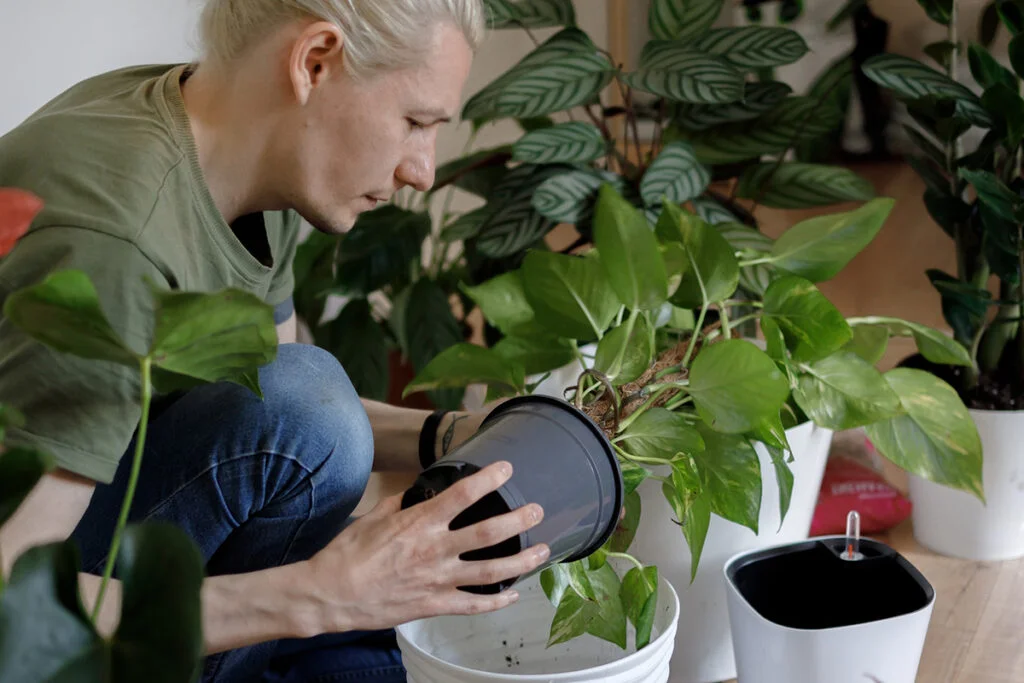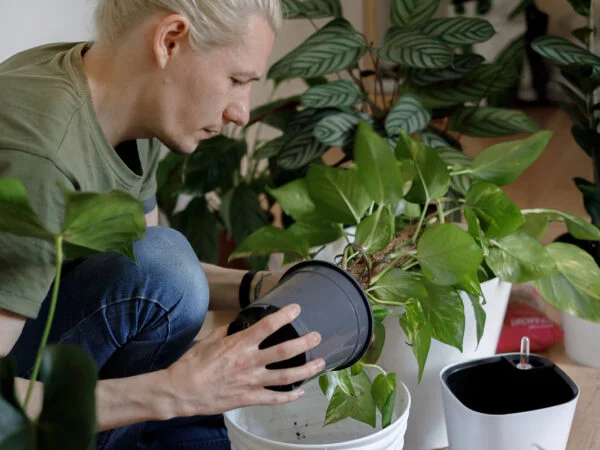
When to Plant Lily Bulbs? Are you ready to add a touch of elegance and beauty to your garden? Look no further than lily bulbs! These little wonders have the power to transform any outdoor space into a vibrant oasis. Whether you're a seasoned gardener or just starting out, planting lily bulbs is a fantastic way to create stunning blooms that will leave you in awe.
There's something truly magical about watching lilies grow from bulbs. From the moment you tuck them into the soil, anticipation builds as you imagine the burst of colors that will soon grace your garden. But when is the best time to plant these enchanting beauties? And how deep should you bury their bulbs?
Don't worry, we've got all the answers for you! We'll explore everything from selecting the perfect spot in your garden to understanding the ideal planting depth.
Planting lilies may seem like an intimidating task, but fear not! It's actually much easier than it appears. By following our simple steps and tips, you'll be well on your way to creating a vibrant display that will impress even the most experienced green thumbs.
Read More:
- Easter Lily Indoor Care: Planting, Growing, and Tips
- Easter Lily Care: A Complete Guide
- Giant Lilies – Buy Orienpet Lily Bulbs and Uncover Their Beauty!
- Exploring the Unique Characteristics of Lily Leaves: A Comparative Analysis
- Easter Lily Plants: Tips for Outdoor Growth
- Easter Lily: Ultimate Planting & Growing Tips
So let's dive into this fascinating world of lilies and discover how easy it is to plant their bulbs. Get ready to unleash your inner gardener and embrace nature's stunning creations!
Best Time to Plant Lily Bulbs for Optimal Blooms:
Timing is crucial: discover when to plant lily bulbs for the best results.
If you want your lilies to showcase their vibrant colors and bloom with utmost perfection, timing is everything. Knowing the right time to plant lily bulbs can make a world of difference in the outcome of your floral display. So, let's dive into the ideal timing for planting these magnificent bulbs and ensure you enjoy abundant blooms that will leave everyone in awe.
Ensure optimal blooms by planting your lily bulbs at the right time.

To maximize your chances of success and witness an explosion of color in your garden, it's essential to understand when exactly you should be planting those lily bulbs. While different varieties may have slight variations in their preferred planting times, here are some general guidelines that will help you achieve breathtaking floral displays:
- Late Spring: For most lilies, late spring is an ideal time to get them into the ground. As temperatures begin to warm up and frost becomes less likely, this period provides a perfect balance between giving the bulbs enough time to establish roots before winter arrives again.
- Early Summer: Another suitable time for planting lily bulbs is early summer. By this point, any threat of frost has typically passed, and the soil has warmed up enough for successful bulb growth. Planting during early summer ensures that your lilies have ample time to settle in before colder weather returns.
- Full Sun: Lilies thrive in sunny locations where they receive at least six hours of direct sunlight each day. When choosing the best spot for your lily bed or container garden, make sure it offers plenty of sunshine throughout their growing season.
By aligning your planting schedule with these bloom-friendly seasons and providing them with adequate sunlight, you're setting yourself up for a stunning display that will captivate anyone who sets eyes on it.
Learn about the ideal timing for planting lily bulbs and enjoy abundant flowers.
The best time to plant lily bulbs depends on various factors, including your location, climate, and the specific variety of lilies you're working with. Here are some additional considerations to keep in mind:
- Bloom Times: Different lilies bloom at different times throughout the year. Understanding the bloom times of your chosen varieties will help you determine when to plant their bulbs. Some lilies bloom in late spring, while others may not burst into color until early summer or even late summer.
- Bloom Colors: If you have a particular color scheme in mind for your garden, take note of each variety's bloom color and plan accordingly. By staggering your planting times, you can create a visually appealing sequence of blooms that span across several weeks or months.
To ensure optimal results, it's always a good idea to consult local gardening resources or reach out to experienced gardeners in your area who can provide valuable insights based on their own successes and failures with planting lily bulbs.
Maximize your chances of success by knowing the perfect time to plant lily bulbs.
While there is no one-size-fits-all answerUnderstanding the general guidelines mentioned earlier will set you on the right path towards achieving impressive floral displays. Keep these points in mind as you embark on your journey:
- Research Your Lily Varieties: Each type of lily has its own preferences. Take some time to research the specific varieties you intend to grow and note their recommended planting periods.
- Prepare Your Soil: Before planting your lily bulbs, make sure your soil is well-draining and rich in organic matter. Lilies thrive in loose soil that allows water to flow freely but doesn't become overly saturated.
- Follow Planting Depth Guidelines: Different lilies require different planting depths, so be sure to follow the instructions provided with your bulbs. As a general rule of thumb, plant bulbs two to three times their own height deep.
Seasonal Timing Tips for Planting Lily Bulbs:
Uncover the Best Times to Plant Different Types of Lily Bulbs
Planting lily bulbs at the right time is crucial for their successful growth and blooming. Each variety of lilies has its own preferred planting season, and understanding these seasonal variations can greatly improve your gardening success. Let's delve into the seasonal timing tips for planting different types of lily bulbs.
Explore Seasonal Variations in Planting Times for Various Varieties of Lilies
- Spring-Flowering Lilies: Many popular varieties, such as Asiatic lilies and Oriental lilies, are spring-flowering bulbs. These should ideally be planted in the fall, before the ground freezes. By doing so, you give them enough time to establish their roots before winter sets in. Come springtime, they will reward you with vibrant blooms that fill your garden with color and fragrance.
- Summer-Flowering Lilies: Some varieties, like Tiger lilies and Trumpet lilies, bloom during the summer months. To ensure a stunning display of flowers during this season, it's best to plant these bulbs in early spring or late winter (depending on your region). This allows them to develop strong root systems before the warm weather arrives.
- Fall-Flowering Lilies: For those seeking autumnal beauty in their gardens, fall-flowering lily varieties like Autumnalis lilies are perfect choices. These bulbs should be planted in late summer or early fall when temperatures start to cool down slightly. By planting them at this time, they have ample opportunity to establish themselves before putting on a show later in the season.
Get Insights into Seasonal Considerations for Successful Planting of Lily Bulbs
Timing isn't everything when it comes to planting lily bulbs; there are other important considerations based on each season:
- Soil Temperature: Before planting, it's crucial to ensure that the soil temperature is suitable for lily bulb growth. Cold soil can impede root development, while overly warm soil may cause bulbs to rot. Aim for a soil temperature between 50°F and 60°F (10°C and 15°C) for optimal results.
- Frost Protection: If you live in an area prone to late spring frosts, consider planting your lily bulbs slightly deeper than recommended. This provides them with extra protection against frost damage.
- Watering: Adequate watering is essential during the establishment phase of lily bulbs. Be mindful of seasonal rainfall patterns and adjust your watering accordingly. In dry seasons, regular deep watering is necessary to keep the bulbs hydrated.
- Sunlight Exposure: Most lilies thrive in full sun or partial shade conditions. Consider the sunlight exposure in your garden when selecting a planting location for different lily varieties.
Learn About Specific Seasons Ideal for Planting Different Types of Lilies
To help you plan your gardening endeavors effectively, here are some specific seasons that are ideal for planting different types of lilies:
- Spring Planting:
- Asiatic Lilies
- Oriental Lilies
- Martagon Lilies
- Early Spring Planting:
- Tiger Lilies
- Trumpet Lilies
- Aurelian Hybrids
- Late Summer/Fall Planting:
- Autumnalis Lilies
- Madonna Lilies
- Candidum Lilies
By aligning each type of lily bulb with its preferred season, you give them the best chance to flourish and produce stunning blooms.
Master the Art of Timing by Understanding Which Season Suits Each Type of Lily Bulb
Timing plays a vital role in successful gardening, especially. By familiarizing yourself with the seasonal variations for different lily varieties, you can ensure optimal growth and blooming. Remember to consider soil temperature, frost protection, watering needs, and sunlight exposure to provide the best conditions for your lilies.
So, whether you're planning a vibrant spring garden or aiming for an autumnal oasis, knowing when to plant lily bulbs will help you create a stunning display of nature's beauty in your own backyard. Happy gardening!
*Note: The information provided here serves as general guidelines.
Essential Care Guide for Lilies: Maintenance and Bulb Care:
Lilies are beautiful flowers that can add a touch of elegance to any garden. To ensure that your lilies thrive and produce optimal blooms, it is crucial to provide them with the right care and maintenance.
Best Time to Plant Lily Bulbs for Optimal Blooms:
To achieve the best results when planting lily bulbs, it is important to consider the timing. The ideal time to plant lily bulbs is in the late autumn or early spring. This allows the bulbs to establish their root systems before they begin producing blooms. By planting at this time, you give your lilies a head start in their growth cycle, resulting in more vibrant and abundant flowers.
Seasonal Timing Tips for Planting Lily Bulbs:

Different types of lilies have varying preferences. It is essential to understand these preferences to maximize your chances of success. Here are some seasonal timing tips for planting different types of lily bulbs:
- Spring-Flowering Lilies: These varieties should be planted in the autumn months, preferably around September or October. By doing so, you allow them enough time to develop strong roots over winter, leading to stunning blooms in spring.
- Summer-Flowering Lilies: For summer-flowering lilies, it is recommended to plant them in early spring after the last frost has passed. This ensures that they have ample time during the warmer months to grow and bloom beautifully.
- Fall-Flowering Lilies: Fall-flowering lilies should be planted in late spring or early summer. This gives them sufficient time to establish their root systems before cooler temperatures arrive, allowing them to showcase their captivating blooms during autumn.
Remember that these timing tips serve as general guidelines, and it is always advisable to check the specific requirements of the lily variety you are planting for optimal results.
In conclusion, understanding the best time to plant lily bulbs and following seasonal timing tips can greatly enhance your chances of achieving vibrant and abundant blooms. By providing your lilies with proper care and maintenance, you will be rewarded with a stunning display of nature's beauty in your garden.
So why wait? Get ready to experience the enchanting allure of lilies by planting them at the right time and ensuring they receive the care they deserve. Your garden will be transformed into a haven of natural splendor that will leave you and your visitors in awe.
FAQs: When to Plant Lily Bulbs?
Q: Can I plant lily bulbs in pots instead of directly in the ground?
A: Yes, you can plant lily bulbs in pots. Ensure that the pot has good drainage and use a well-draining potting mix. Keep in mind that potted lilies may require more frequent watering compared to those planted directly in the ground.
Q: How deep should I plant my lily bulbs?
A: Lily bulbs should be planted at a depth roughly three times their size. This means that larger bulbs will need to be planted deeper than smaller ones. Aim for a depth of around 6-8 inches (15-20 cm) for most varieties.
Q: Do lilies require full sun or partial shade?
A: Lilies generally prefer full sun but can tolerate some light shade. If possible, choose a location with at least six hours of direct sunlight per day for optimal growth and blooming.
Q: Should I fertilize my lilies? If so, how often?
A: Fertilizing lilies can help promote healthy growth and abundant blooms. Apply a balanced fertilizer (such as 10-10-10) when planting and then again every spring before new growth appears. Follow the package instructions for application rates.
Q: How often should I water my lilies?
A: Lilies prefer consistently moist soil, but they do not like to sit in waterlogged conditions. Water deeply once or twice a week, depending on rainfall and temperature. Adjust watering frequency during hot, dry spells to prevent the soil from drying out completely.
Q: Can lilies be grown indoors?
A: While lilies are primarily outdoor plants, certain varieties can be grown indoors successfully. Choose smaller or dwarf varieties that are better suited for container gardening. Provide them with ample sunlight and proper care to ensure their well-being.
Q: Do lilies attract bees and butterflies?
A: Yes, lilies are known to attract bees and butterflies with their vibrant colors and sweet fragrance. They can contribute to pollinator-friendly environments and add beauty to your garden while supporting local wildlife.
Q: How long do lily bulbs take to bloom after planting?
A: The time it takes for lily bulbs to bloom after planting varies depending on the variety and environmental conditions. On average, you can expect blooms to appear within 60-90 days from planting.
Q: Can I leave my lily bulbs in the ground over winter?
A: Most hardy lily bulbs can withstand winter temperatures if planted at the appropriate depth.
Image Source: Paid image from CANVA





